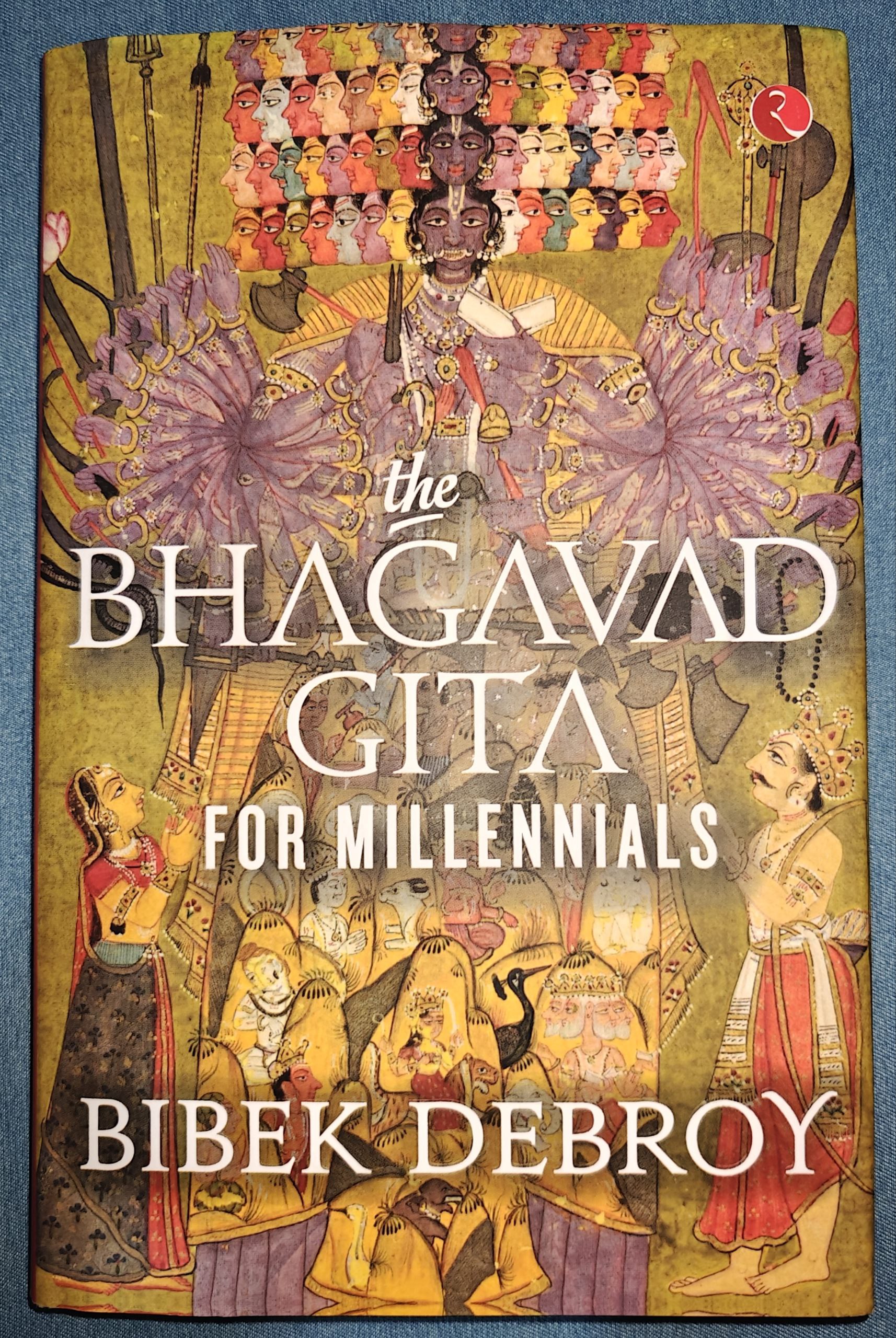If your first thought about me after seeing the title is - “How old are you?” - I’ll not be surprised. This is because you’ll not be the first person to comment a similar thought.
Around a decade ago (2013-14), when I was in college, I decided to utilize the College library for its full worth. I borrowed a copy of Bhagavad Gita, As It Is, By A. C. Bhaktivedanta Swami Prabhupad. I had seen a Gujarati language copy of it at my home and a couple of places, and the “art” within the book interested me. Of course, we’ve all heard great things about the Bhagavad Gita, and when I managed to get my hands on an English copy, I had to try it. When I took the book to the library checkout, the librarian asked me in a sneering tone in Marathi – “Are you old already?” (Speakers of the language would know what I’m talking about). I got a bit stumped at that, and so I equally answered, “Why, only old people are supposed to read this book?”. I don’t exactly remember the librarian’s reply, but I like to think he was as stumped as I was. For some reason, I didn’t even read a single page of the book then, and so I returned it back after it spending a couple of months alone in my closet. So, I’ll forgive you the original thought.
My last read - Devi, for Millennials wasn’t very fruitful for me. But I did want to read the Gita. And boy, I am glad I did. This book satisfies most of the things the other was falling short on. In hindsight, I’d say it’s better to read this book first, and then pick up the other one.
The book starts small - Bibek ji, in his characteristic professorial style provides an informative background of the book, the original Gita, who composed it, when, and how it evolved. He then explains why the Gita is a part of Mahabharata, and how a knowledge of Sanskrit is essential to getting the “essence” of Gita - because a lot of meaning and subtext is lost while translating it to English. He even goes to the extent of explaining how to read Sanskrit for the book, to make a novice reader make sense of how it should be read. However, this isn’t enough for novice readers like me, but I appreciate Bibek ji for the attempt. He mentions the original Sanskrit shlokas, and then rewrites the Sanskrit to typical Devanagari form for making sense of the Sanskrit grammar, for the reader to help them understand better, besides the translation in English. Since this book is not a translation of the Bhagavad Gita, it is not a series of shlokas as found in the original. Instead, the book is grouped into ideas of Gita, and how different parts of Gita explain the ideas. To illustrate my point, it would be essential to provide an index of the book for perusal.

Index illustrates the ideas explained in the book
- The Mahabharata
- Sanskrit and Poetry
- Krishna as a Historical Person
- The Bhagavad Gita Synthesis
- The Smriti Background
- Who Am I?
- Who Am I Not?
- The Jivatman and the Paramatman
- Birth, Death, Samsara and Karma
- Ahamkara, and the Path of Bhakti
If you feel that the index is quite bare-bones, don’t worry; it has a decent amount of ideas covered, and actually references other texts, authors, and even modern popular science when required!
Bibek ji, in his quintessential style, dissects each idea, and makes it as easy to understand as possible. The chapter on Krishna is very much intriguing. Bibek ji also explains how the Bhagavad Gita has ideas for all the ages of readers - the complication of reading and comprehension notwithstanding. There are more stories from different texts explained to illustrate the ideas of Gita. What is dharma, what is karma, how they are interlinked, and how it is very difficult to know what the correct dharma is. A lot of the ideas are ingrained into the Indian way of upbringing as Sanskar.
If you read this book, you’ll get to know a lot about Indian culture and the accompanying texts with it. As a novice etymology student, this book is a goldmine on different types of words we use daily, for granted! Of course, the original Gita, is also a deeply philosophical book. The genius of the author is that it doesn’t feel so. Each of the ideas has an addendum for references for further reading. There is a lot to unpack here, and not for nothing it took me quite some time to finish this book (around 3 months). However, a lot of it is also because I had made up my mind to read the shlokas, and not just jump to the translation as I inadvertently do, and delays in picking up the book to read.
Even though the Gita is considered as a Hindu text, and certainly the context is Hindu - the ideas are quite “secular”. What most religious texts espouse is preachiness, but I never observed any such overt ideas. If only we read and understood what the shlokas mean, instead of reciting them by rote without understanding, we would all be better off. What are shlokas, if not what the modern people call affirmations. Shlokas are magic in the sense that they put ideas in you, and the world as a means of positive affirmation.
I would keep this in a must-read list for someone trying to learn more about Indian/Hindu culture, texts, and Philosophy. Speaking about Indian Philosophy, I always recommend the History of Philosophy in India podcast. I always say, India has probably the richest culture in the world - and neither the Indians, not the world, fully appreciate it.
If you have read the book, what are your thoughts?
